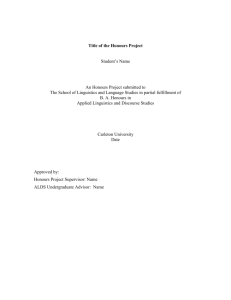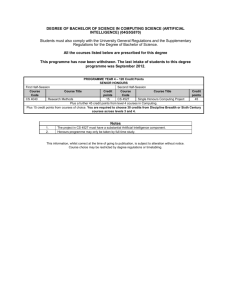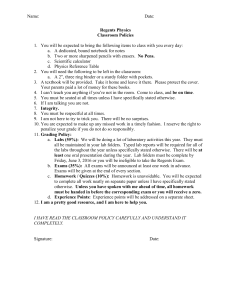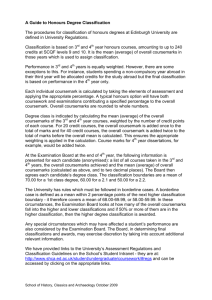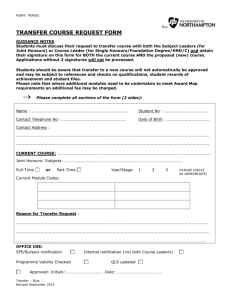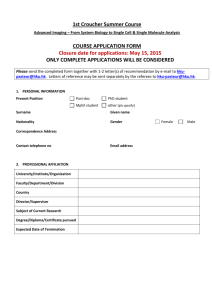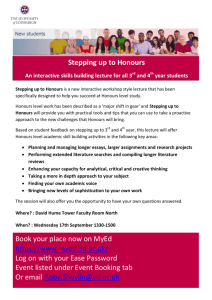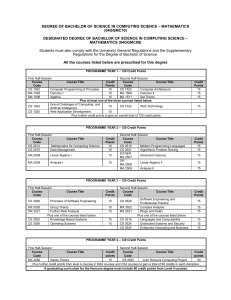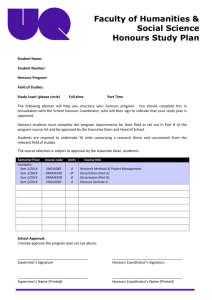AP Physics B
advertisement
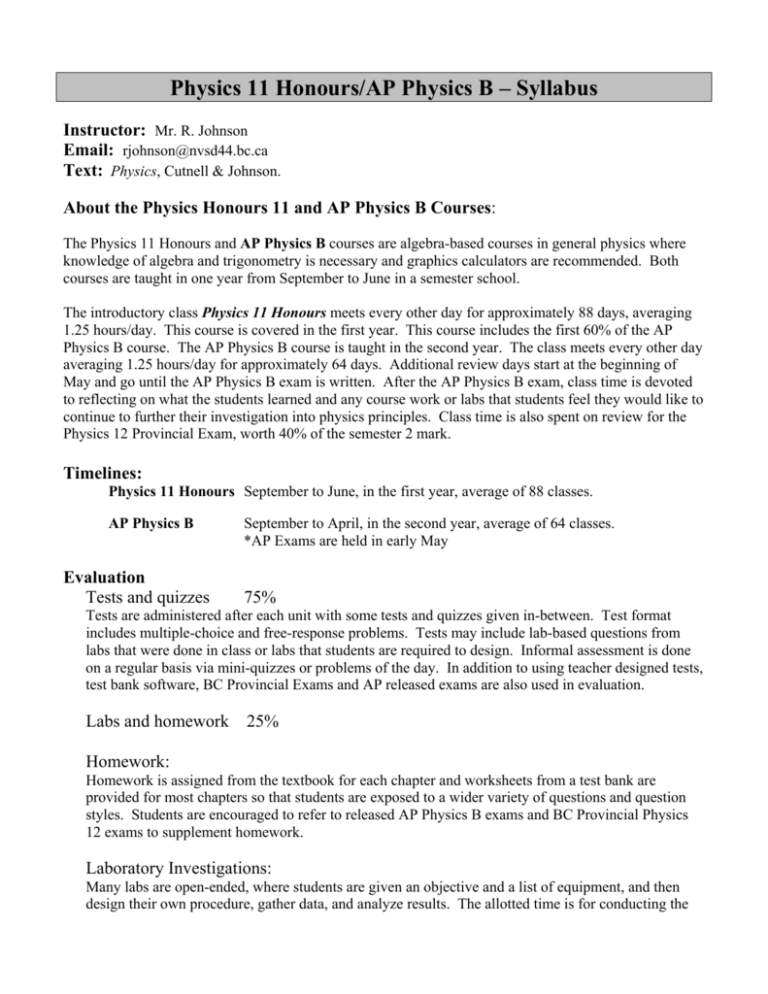
Physics 11 Honours/AP Physics B – Syllabus Instructor: Mr. R. Johnson Email: rjohnson@nvsd44.bc.ca Text: Physics, Cutnell & Johnson. About the Physics Honours 11 and AP Physics B Courses: The Physics 11 Honours and AP Physics B courses are algebra-based courses in general physics where knowledge of algebra and trigonometry is necessary and graphics calculators are recommended. Both courses are taught in one year from September to June in a semester school. The introductory class Physics 11 Honours meets every other day for approximately 88 days, averaging 1.25 hours/day. This course is covered in the first year. This course includes the first 60% of the AP Physics B course. The AP Physics B course is taught in the second year. The class meets every other day averaging 1.25 hours/day for approximately 64 days. Additional review days start at the beginning of May and go until the AP Physics B exam is written. After the AP Physics B exam, class time is devoted to reflecting on what the students learned and any course work or labs that students feel they would like to continue to further their investigation into physics principles. Class time is also spent on review for the Physics 12 Provincial Exam, worth 40% of the semester 2 mark. Timelines: Physics 11 Honours September to June, in the first year, average of 88 classes. AP Physics B Evaluation Tests and quizzes September to April, in the second year, average of 64 classes. *AP Exams are held in early May 75% Tests are administered after each unit with some tests and quizzes given in-between. Test format includes multiple-choice and free-response problems. Tests may include lab-based questions from labs that were done in class or labs that students are required to design. Informal assessment is done on a regular basis via mini-quizzes or problems of the day. In addition to using teacher designed tests, test bank software, BC Provincial Exams and AP released exams are also used in evaluation. Labs and homework 25% Homework: Homework is assigned from the textbook for each chapter and worksheets from a test bank are provided for most chapters so that students are exposed to a wider variety of questions and question styles. Students are encouraged to refer to released AP Physics B exams and BC Provincial Physics 12 exams to supplement homework. Laboratory Investigations: Many labs are open-ended, where students are given an objective and a list of equipment, and then design their own procedure, gather data, and analyze results. The allotted time is for conducting the experiment and recording of data. The students perform the data analysis in class and complete the lab report at home. The AP Physics laboratory component is meant to be comparable to college-level physics laboratories, with a minimum of 12 student-conducted laboratory investigations representing a variety of topics covered in the course. Students will work in small groups but each student must submit their own lab report for grading. Students will be encouraged to maintain a lab portfolio containing all of their lab reports. Laboratory Reports: Typical lab reports will be in the format of: • A statement of the Problem • Hypothesis • Experimental procedure • Diagrams • Observations/Data tables • Analysis of Data/Calculations • A conclusion including error analysis and modifications Physics 11 Honours topics Vectors Ch 1 (all) Kinematics Ch 2 (all) Kinematics in 2-D (Projectiles) Ch 3 (all) Dynamics Ch 4 (all) Circular Motion Ch 5.1-5.3, 5.4 (banked curves), 5.5-5.8 Work and Energy Ch 6.1-6.3, 6.4 (nonconservative forces), 6.5-6.10 Momentum Ch 7.1-7.4 Rotational basics Ch 8.1, 8.2, 8.4, 8.5 Torque and Equilibrium Ch 9.1-9.2 Waves Ch 16.1 – 16.9, Ch 17.1- 17.6 Optics Ch 25 (all), Ch 26.1 – 26.9 Interference Ch 27 (all) Thermal Physics Ch 12.1-12.9, Ch 13.1-13.3 Gas Laws/Laws of Thermodynamics Ch 14.1-14.3, Ch 15.3-15.10, 15.11 entropy as concept only. Nuclear Physics Ch 31.1-31.4, Ch 32.3-32.5 A final exam will be given, counting for 25% of the Physics 11 Honours mark. AP Physics 12 topics Simple Harmonic Motion (includes mass on a spring, pendulum and other oscillations involving dynamics and energy relations) Ch 10.1-10.4 Fluid Mechanics (includes hydrostatic pressure, buoyancy, fluid flow continuity, Bernoulli’s equation) Ch 11.1-11.10 Electrostatics Ch 18.1-18.8 Electric Potential Ch 19.1-19.5 Circuitry Ch 20.1-20.4, 20.6-20.12 Magnetism Ch 21.1-21.3, 21.4 (optional), 21.5, 21.7 Electromagnetism Ch 22.1-22.5, 22.7, 22.9 Atomic and Quantum Physics (includes photons and photoelectric effect, atomic energy levels, wave-particle duality) Ch 29.1-29.5, and the Davisson-Germer experiment, Ch 30.1-30.4, 30.7 (just to be able to find wavelength of x-rays produced by electrons accelerated at a specific voltage) The AP Exam is in early May (3 hours) The optional Physics 12 Provincial Exam (2 hours) is in June and worth 40% of the Physics 12 mark. Due to the extremely demanding nature of this course, students should expect one to two hours of homework or studying per night for the duration of the year. It is expected that students will: 1. 2. 3. 4. 5. Attend all classes on time with appropriate materials (textbook, paper, pen, pencil, etc) Keep an organized and complete notebook. Review each day the work completed in class. Complete all labs/assignments on time. Attempt a minimum of 25 problems from each chapter and submit them prior to the chapter test. Problems can be from the textbook, the internet, or any source you find suitable. You must show the solutions to these problems (not just the answers). 6. Thoroughly prepare for tests. 7. Seek immediate help from the teacher upon the development of problems. 8. Help provide a cooperative and safe classroom climate which is conducive to learning for all members of the class. 9. Provide a note with the reason behind an absence, immediately upon returning back to school. 10. Notify the teacher if an extended absence is anticipated. 11. Be responsible for finding out work missed and making it up after an excused absence. Tests written late cannot be used to increase a students mark. Note: Some courses may incur additional expense
